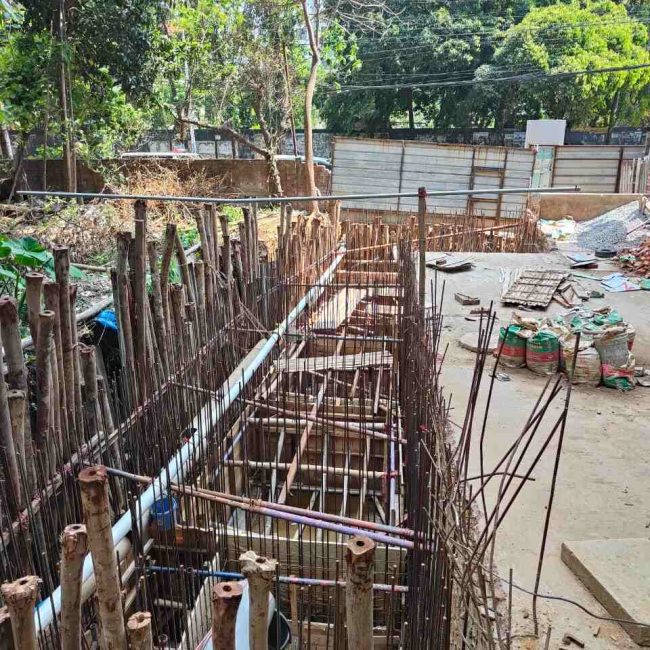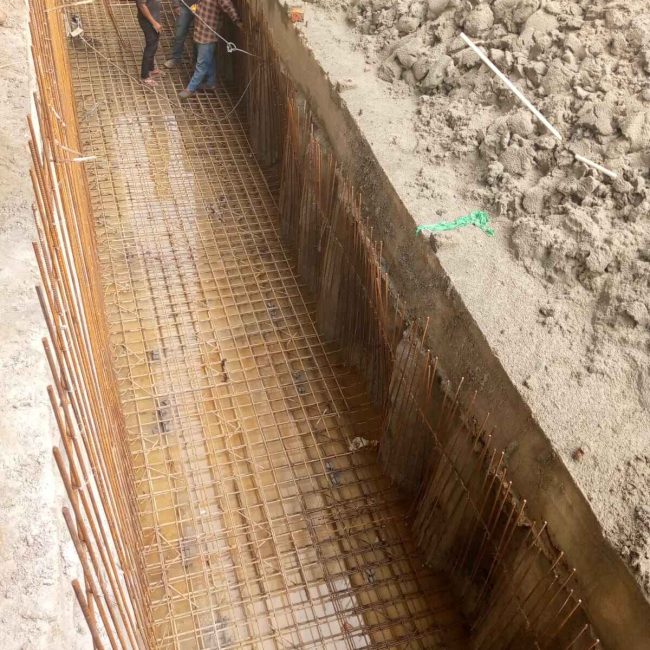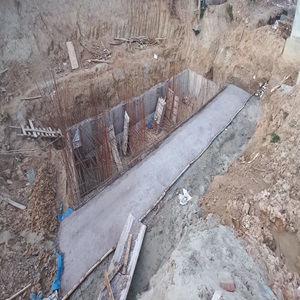Introduction
Green Genesis Engineering Limited (GGEL) stands out as a proven and trusted sewage treatment plant (STP) supplier in Bangladesh. Leveraging advanced technology, GGEL is dedicated to providing reliable, high-performance solutions that prioritize customer satisfaction. The Sewage Treatment Plant (STP) systems are meticulously designed for hassle-free operation, featuring user-friendly interfaces and efficient execution. GGEL aims to seamlessly integrate water treatment processes, ensuring both effectiveness and ease of use for valued clients. With a focus on excellence, GGEL sets the standard for innovative and dependable wastewater treatment solutions in Bangladesh. Their comprehensive sewage treatment solutions include versatile and customized designs tailored to specific client requirements, employing cutting-edge technologies for enhanced performance and sustainability, offering portable and packaged solutions for adaptability, providing scalable options for future expansion, delivering cost-effective solutions through optimized processes, and emphasizing eco-friendly practices to minimize the ecological footprint. GGEL’s consultative approach involves thorough consultations to understand client needs, fostering collaboration for successful project outcomes. Choose GGEL’s sewage treatment systems for a reliable, tailored, and environmentally conscious solution.
What is a Sewage Treatment and Sewage Treatment Plant (STP)?
Sewage treatment is a crucial wastewater management process that aims to eliminate contaminants from sewage, generating an effluent suitable for discharge into the environment or intended reuse, thus preventing water pollution from raw sewage discharges.
The Sewage Treatment Plant is a facility where this treatment takes place, typically involving physical, biological, and chemical processes to purify the sewage before release into the environment. STP plays a pivotal role in treating and purifying both domestic and industrial wastewater. Its design is focused on removing harmful contaminants from wastewater before reintroducing it into the natural ecosystem. Wastewater comprises diverse organic and inorganic pollutants, posing significant risks to human health and the environment. These pollutants encompass fecal matter, chemicals, pathogens, and nutrients. Sewage treatment plants are tasked with efficiently eliminating these contaminants, averting water body pollution, and curbing the spread of diseases.
What are the types of sewage treatment?
There are several types of sewage treatment plants, including:
- Membrane Bioreactor (MBR)
- Moving Bed Biofilm Reactor (MBBR)
- Activated Sludge Process (ASP)
- Sequential Batch Reactor (SBR)
- Rotating Biological Contactor (RBC)
- Bio-Chemical (Chemical Followed by Biological)
- Chemical Followed by Particle Filtration
What is the MBR system used in Sewage treatment plants?
Membrane Bioreactor (MBR): Membrane Bioreactor (MBR) is a wastewater treatment process that combines biological treatment with membrane filtration. In this system, microorganisms break down organic pollutants in the wastewater, and membranes are used to separate treated water from activated sludge. The membranes act as a physical barrier, ensuring the removal of suspended solids, bacteria, and other contaminants.
The MBR process offers advantages such as higher effluent quality, smaller footprint, and improved solids retention compared to traditional wastewater treatment methods. It’s widely used in municipal and industrial applications for water reclamation and meeting stringent discharge standards. It is the combination of the membrane process and a biological waste-water treatment process.
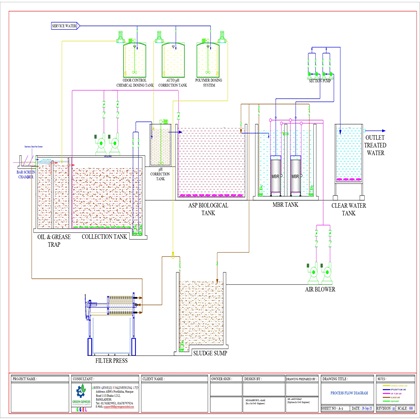


What are the advantages of the MBR system in sewage treatment?
Advantages of Using an MBR System:
Membrane filtration ensures a high level of effluent quality, even during variable influent conditions, leading to a more reliable and consistent treatment process
The MBR system necessitates a smaller footprint compared to conventional wastewater treatment systems, making them suitable for locations with limited space. In MBR system, a separate settling tank is unnecessary due to the efficient solid separation achieved by membrane filtration process, which streamlines the overall water treatment.
The biological treatment in MBR system produces sludge with higher solids concentration, reducing the overall sludge volume and facilitating easier handling and disposal.
MBR systems can contribute to improved nutrient removal, addressing concerns related to nitrogen and phosphorus in wastewater.
The high-quality effluent produced by MBRs makes it suitable for various non-potable water reuse applications, contributing to sustainable water management.
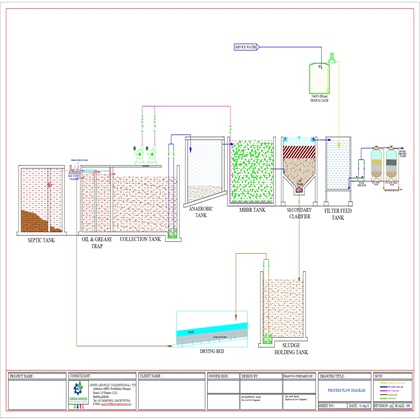


What is the MBBR system used in Sewage treatment plants?
Moving Bed Biofilm Reactor (MBBR): A Moving Bed Biofilm Reactor (MBBR) is a type of wastewater treatment technology used in Sewage Treatment Plants (STP). It requires less space than activated sludge systems. It employs a suspended growth process where microorganisms attach to a moving plastic biofilm carrier within the reactor. These carriers provide a large surface area for the growth of beneficial bacteria, which play a crucial role in breaking down organic pollutants in the wastewater.
In an MBBR system, the biofilm carriers move freely within the reactor, creating a dynamic environment that enhances contact between the wastewater and the microbial biofilm. This promotes efficient biological treatment as the microorganisms work to biodegrade organic matter, nutrients, and other pollutants present in the sewage. MBBR systems are known for their compact, high treatment efficiency and flexibility to handle varying loads. Overall, MBBR technology contributes to effective and sustainable sewage treatment process.
What are the advantages of the MBBR system in sewage treatment?
Advantages of Using an MBBR System:
High Treatment Efficiency: MBBR systems provide effective biological treatment, with a high degree of organic and nutrient removal from wastewater.
Compact Design: The technology allows for a high level of treatment within a relatively small footprint, making it suitable for locations with limited space.
Reduced Sludge Production: The process promotes the growth of biofilm on small media within the reactor, minimizing excess sludge production compared to some other treatment methods.
Easy Maintenance: The simplicity of MBBR systems makes them easy to operate and maintain, with minimal operator intervention required.
Short Start-up Period: MBBR systems typically have a shorter start-up period compared to some other biological treatment processes, allowing for quicker establishment of treatment performance.
Energy Efficiency: The design of MBBR systems often involves lower energy consumption compared to traditional activated sludge systems, contributing to overall operational efficiency.
Enhanced Nutrient Removal: MBBR systems can be designed to facilitate enhanced nutrient removal processes, addressing concerns such as nitrogen and phosphorus removal.
F.A.Q
The primary purpose of sewage treatment is to remove contaminants and pollutants from wastewater before it is released into the environment.
The main stages include primary treatment (physical removal of solids), secondary treatment (biological processes to further treat the wastewater), and tertiary treatment (additional polishing to remove remaining impurities).
The activated sludge process involves microbial treatment of wastewater, where microorganisms break down organic matter, enhancing the water purification process.
Disinfection is crucial to eliminate harmful pathogens and bacteria, ensuring that the treated wastewater meets health and environmental standards before discharge.
Settling tanks allow suspended solids to settle at the bottom, facilitating their removal and clarifying the wastewater during the primary treatment stage.
Nutrient removal processes, such as biological nutrient removal and chemical precipitation, are employed to reduce nitrogen and phosphorus levels in treated wastewater, preventing environmental harm.
Sludge digestion breaks down organic matter in sewage sludge, producing biogas and reducing the volume of sludge, making it easier and more environmentally friendly to handle.
Membrane bioreactors use membranes to separate solids, microorganisms, and impurities, resulting in higher water quality and a more compact treatment process.
Reusing treated wastewater for non-potable purposes, such as irrigation or industrial processes, contributes to water conservation and sustainable resource management.
Effective sewage treatment prevents water pollution, protects aquatic ecosystems, and safeguards public health by ensuring that wastewater released into the environment meets stringent quality standards.
Effective sewage treatment prevents water pollution, protects aquatic ecosystems, and safeguards public health by ensuring that wastewater released into the environment meets stringent quality standards.
Green Genesis Engineering Limited (GGEL) is recognized as the premier Sewage Treatment Plant (STP) supplier, firmly establishing itself as a proven and trusted industry leader in Bangladesh. By harnessing advanced technology, GGEL is committed to delivering reliable, high-performance solutions that consistently prioritize customer satisfaction


